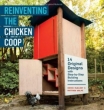Slaughter
Slaughter must be both quick and humane. Methods used are often two stage – stunning and slaughter. Stunning must render the bird insensible and unconscious until it is killed by bleeding or neck dislocation.
We kill the birds first thing in the morning so the crop and gut is empty; shooting them in the head with the air rifle makes the stun and kill. It is very efficient.
We immediately bleed the birds, pluck them, and then hang them for 24 hours in a cool outbuilding (in a clean pillowcase and out of reach of cats and dogs). They are much easier to dress when they are cold.
Stunning
There are two methods of stunning:
- Electrical, in which an electric current is passed through the brain causing unconsciousness
- Concussion, in which a severe blow to the head causes sufficient shock waves through the brain to render the bird unconscious. The blow may, of course, cause death.
In both cases, the effective stun must immediately be followed by slaughter before the bird can begin to recover.
Electrical stunning
Head-only electrical stunning equipment is available for on farm use and, if operated correctly, is a humane method of stunning small numbers of birds. Equipment must be regularly cleaned and maintained and properly applied.
Concussion stunning
On welfare grounds, this method is not recommended without the correct equipment such as the cartridge powered Cash Poultry Killer because it is not easy, without the correct equipment and technique, to ensure an effective blow to the skull.
Neck cutting
This method of slaughter can be used after stunning. Neck cutting must be done within 15 seconds of stunning and at least one of the carotid arteries or the vessels from which they arise must be severed. To ensure rapid death, a single cut with a sharp, clean knife across the front of the neck just below the head will sever both carotid arteries and jugular veins.
The bird must be allowed to bleed for one and a half minutes before plucking and gutting can begin. Always check that the bird is dead – hold open the eye and touch the surface with the shaft of a feather; if the third eyelid moves across the eye, allow a longer time to bleed. It is best to bleed the bird over a container that can be cleaned or into a bag that can be disposed off.
Neck dislocation
Sick or diseased birds should be killed by neck dislocation to avoid the spread of disease and infection.
Although neck dislocation without prior stunning is legal, in practice it is difficult to ensure immediate insensibility and therefore is not recommended for the routine slaughter of poultry on welfare grounds. It should only be used in an emergency.
Manual neck dislocation should not be attempted on birds over 3kg. In any case, it requires a degree of skill, experience and physical strength.
The use of pliers i.e. neck crushing must never be attempted as it is neither quick nor humane.
Decapitation
This is legal without prior stunning and involves severing the head from the neck. It is not recommended on welfare grounds as brain activity may continue for up to 30 seconds and it is doubtful if the bird is rendered immediately unconscious.
Therefore stunning should always precede decapitation.
Use of a firearm
The use of a firearm is a legal method of killing poultry, but is not recommended for killing poultry on the grounds of safety and practicality.
Codes of Practice
There are various Codes of Practice available from the British Poultry Council and Defra - see the links below. The HSA recommends the use of percussive or electrical stunning using appropriate equipment followed by immediate neck cutting using a clean, sharp knife.
Food safety and hygiene
If you are slaughtering poultry for consumption, as opposed to emergency slaughter or culling, then you should maintain the highest standards of food safety and hygiene.
Gutting poultry
If you buy ungutted poultry or if you raise and kill your own birds for the table, you should take adequate precautions to ensure that the resulting poultry meat is safe for human consumption.
Keep the carcase cool. If you have to transport it, do so in a cool box and put it immediately into the fridge or freezer.

About Rosemary Champion
Rosemary lives on a 12 acre smallholding in Angus, in the east of Scotland, where she keeps Ryeland Sheep, Shetland cattle and assorted poultry. She was destined to be a smallholder from an early age.
Further Reading
 Chicken & Eggs: River Cottage Handbook No.11 Mark Diacono |  Storey's Guide to Raising Chickens Gail Damerow |  A Beginners Guide to Caring for Ex-Batts Jo Barlow |  Reinventing the Chicken Coop Matthew Wolpe |  Chickens: The Essential Guide to Choosing and Keeping Happy, Healthy Hens Suzie Baldwin |
Smallholding shop
When you click links below and make a purchase, this may result in this site earning a commission from eBay.

Natures Grub-Chicken Seed and Insect Mix 700g
A delectable mix of… from £6.38 + p&p

Plastic Egg Tray
Durable plastic egg tray,… from £3.04 + p&p

Poultry Shield 5L
Poultry shield is a… from £17.55 + p&p

Pheasant Feeder 27cm
Eltex Pheasant Feeder.Holds up… from £32.32 + p&p
















